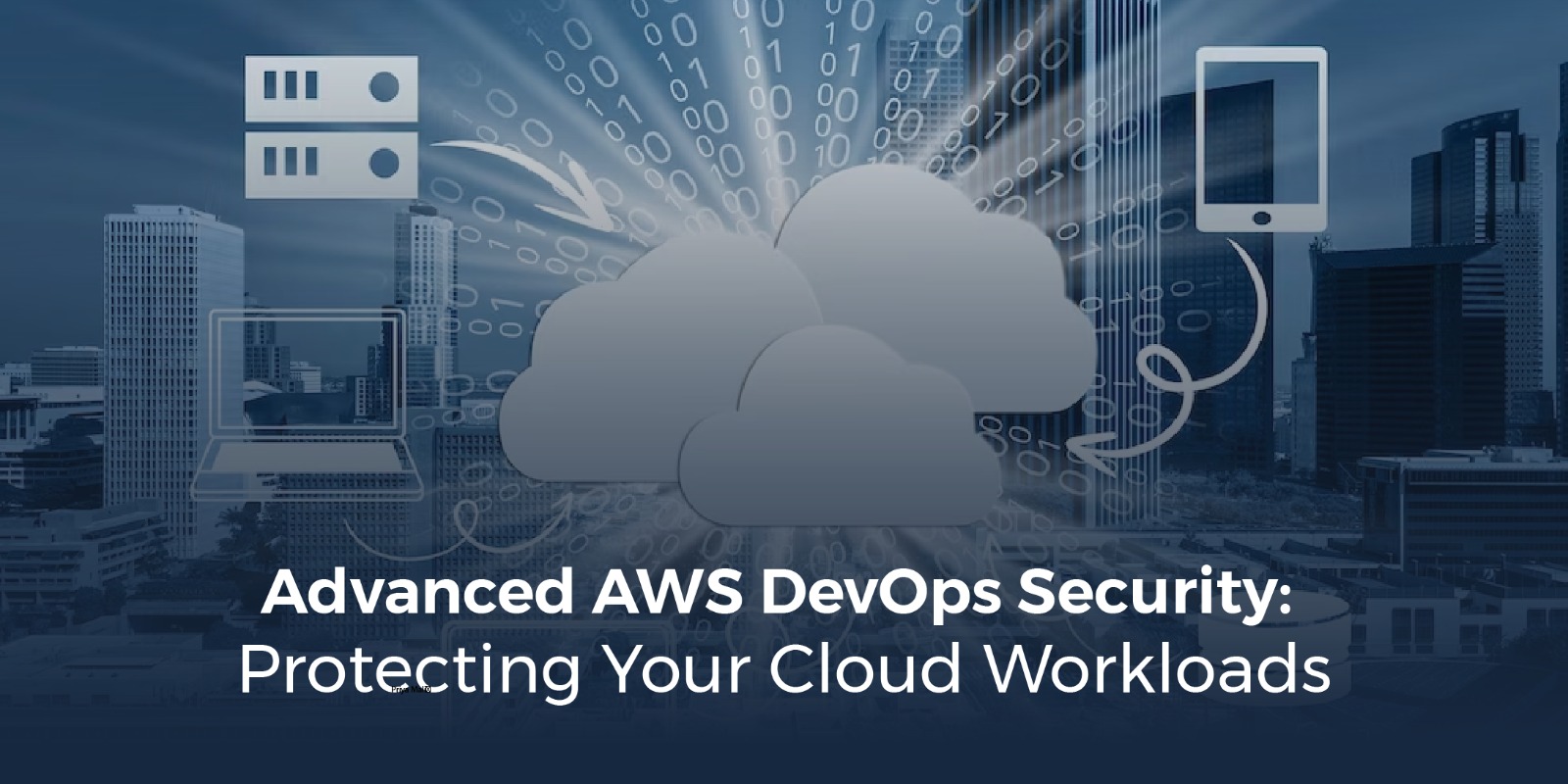
As organizations increasingly migrate their workloads to the cloud, the need for robust security measures has never been greater. With the advent of DevOps practices, the speed and agility of software development and deployment have improved significantly. However, this has also introduced new security challenges. This quick read will give you insights into how to protect cloud workloads effectively, best implementation practices and the benefits advanced security offers.
AWS DevOps is a set of practices and tools that streamline software development and deployment within Amazon Web Services (AWS). It emphasizes automation, collaboration, and continuous integration/continuous deployment (CI/CD) to accelerate software delivery and enhance operational efficiency in the AWS cloud environment. DevOps optimizes the collaboration between development (Dev) and operations (Ops) teams, fostering a culture of automation and agility.
AWS hosts sensitive data and critical applications, making it a prime target for cyber threats. Neglecting security can lead to data breaches, financial losses, and reputational damage. DevOps practices, with their emphasis on automation and rapid releases, can inadvertently introduce vulnerabilities if not secured properly. Continuous integration/continuous deployment (CI/CD) pipelines must be protected to prevent malicious code injections or unauthorized access. Compliance with regulatory requirements is essential, as non-compliance can result in legal consequences.
Advanced AWS DevOps Security is the application of security practices within the DevOps framework.
Continuous Integration/Continuous Deployment (CI/CD): The rapid release cycles of CI/CD pipelines make it crucial to ensure that security measures are not bypassed in the interest of speed.
Infrastructure as Code (IaC): IaC templates can inadvertently expose security vulnerabilities, making it vital to secure the infrastructure definition itself.
Dynamic Cloud Environments: AWS environments are dynamic and often transient, making it challenging to maintain a consistent security posture.
Static Analysis: Perform static code analysis on IaC templates to identify security issues before deployment.
Automated Scanning: Integrate automated security scanning into the CI/CD pipeline to catch vulnerabilities early.
AWS Lambda: Leverage AWS Lambda functions to automate security tasks, such as incident response and remediation.
CloudFormation Guard: Use tools like CloudFormation Guard to enforce security policies on IaC templates.
AWS Config Rules: Create custom AWS Config rules to define and enforce security policies as code.
AWS Security Hub: Utilize AWS Security Hub to centrally manage and monitor compliance across AWS accounts.
Enhanced Security: Advanced AWS DevOps Security provides a proactive approach to security, reducing the risk of data breaches and vulnerabilities.
Faster Response to Threats: Automation and continuous monitoring enable rapid response to security threats, reducing downtime and minimizing potential damage.
Cost Efficiency: By identifying and addressing security issues early in the development process, organizations can avoid costly security incidents in production.
Regulatory Compliance: Advanced AWS DevOps Security helps organizations maintain compliance with industry regulations and standards.
Whether you are a service provider or an enterprise application development team, it is clear that security remains paramount. Advanced AWS DevOps Security not only safeguards your cloud workloads but also ensures that security is an integral part of your DevOps processes. By following best practices, automating security measures, and embracing compliance as code, organizations can confidently navigate the AWS ecosystem while mitigating risks and reaping the numerous benefits of secure and efficient cloud operations.